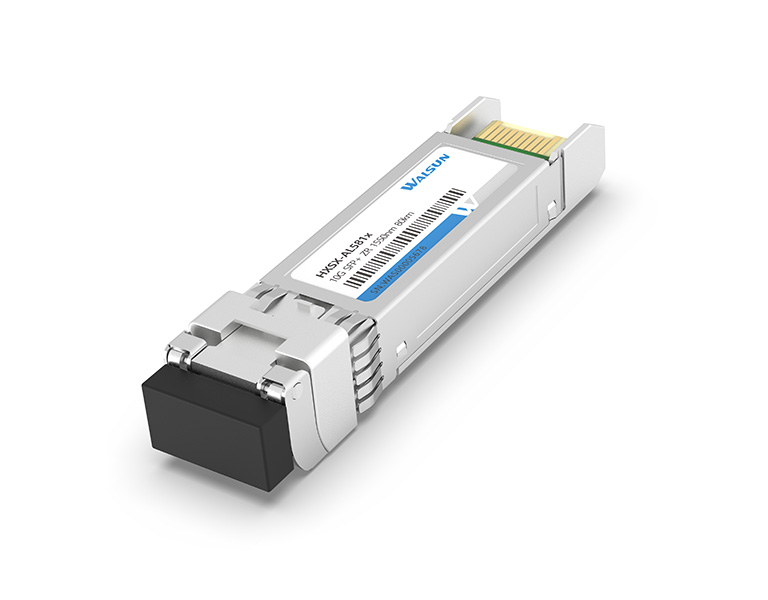

 Industry Dynamic +
Industry Dynamic +  2023.11.20
2023.11.20The main purpose of conducting optical module testing is to ensure that the performance of the optical module is reliable, meets the specification requirements, and can work stably in the actual application scenarios, specifically including the following aspects:
Confirming the transmission and reception performance of the optical module: By testing the transmission and reception performance of the optical module, it ensures that it can transmit signals normally and guarantee the quality and reliability of data transmission.
Meet the corresponding standards and specifications: When conducting the procurement and deployment of optical communication system equipment, it is usually necessary to meet the corresponding standards and specifications, and optical modules are no exception. Through testing, optical modules can be examined to see if they meet the relevant standards and specifications to ensure the reliability and stability of optical modules in actual application scenarios.
Troubleshooting problems in the production and manufacturing process: Through testing, problems that may exist in the manufacturing and production process of optical modules can be found, resolved and improved in a timely manner to improve the manufacturing quality and stability of optical modules.

Ensure network operation efficiency and stability: Optical module is one of the key components of optical communication system, and its stability and reliability are crucial to the operation efficiency and stability of the whole network. Through optical module testing, its stability and reliability can be ensured, thus improving network operation efficiency and stability.
Conducting optical module testing is one of the key links to ensure the stable operation of optical communication systems.
For 10G optical modules, the following test programs can generally be used (selected and adjusted according to specific circumstances):
Transmit test: test whether the optical module can normally transmit optical signals, mainly including laser initial operating current, transmit power, center wavelength, spectral width and other parameters test.
Receiving test: test whether the optical module can normally receive optical signals, mainly including receiving sensitivity, BER, threshold current, hardware weakening and other parameter tests.
Overall performance test: Comprehensive test on the transmission and reception performance of the optical module under typical working conditions, mainly including data transmission test and environmental adaptability test.
Compatibility test: test whether the optical module can be compatible with other equipment, including interoperability test of different brands of optical modules, switches, routers, servers and other equipment.
Durability test: Test the stability and reliability of the optical module during long-term use, mainly including temperature cycling test, vibration impact test, hot and humid environment test.
What are the 10G optical module test equipment? The commonly used equipment is as follows:
Light source: such as LD (laser diode), LED (light-emitting diode), etc., which is used to generate optical signals for emission testing.
Optical power meter: used to measure the optical power transmitted and received by the optical module.
Analog Signal Source: Used to generate analog data for data transmission testing and BER testing.
Bit Error Rate Analyzer (BERT): used to test the bit error performance of data transmitted by optical modules.
Fiber Optic Attenuator: Used to simulate the attenuation of optical signals under long distance transmission.
Environmental temperature and humidity test chamber: used to simulate the adaptability test of optical modules under different environmental conditions.
Spectrometer: used to measure the center wavelength, spectral width and other parameters of the optical signal.
According to the specific test program needs, you can also choose to use wavelength meter, frequency meter, optical attenuation meter, time domain reflectometer and other test equipment.
Optical module test equipment, commonly used specific models are as follows (selected according to the actual situation)
Light source: Agilent 8163A/B, EXFO FTB-150, JDSU SLS-12, Tektronix OM4006, Yokogawa AQ4280
Optical power meter: EXFO FPM-300, Agilent 8153A/B, JDSU OLP-55, Anritsu ML93A, Keysight N7744A, etc.
Analog Signal Sources: Keysight 33210A, Agilent 81180A, Tektronix AWG2041, Anritsu MP1763B, etc.
BERT: Anritsu MP2100A, Tektronix CSA803C, Keysight 86100D, JDSU MTS-6000A, EXFO FTB-8130NGE, etc.
Fiber Optic Attenuator: JDSU HA9, Agilent 8156A, Anritsu MA2400A, EXFO FVA-600, etc.
Environmental temperature and humidity test chamber: Binder MKF240, ESPEC SH-661, Thermotron S-8C, Yihua JC-420, etc.
The above equipment models are for reference only, the choice of specific models need to be adjusted according to actual needs. At the same time, it should be noted that, with the development of technology and changes in market demand, new models of test equipment continue to emerge, it is recommended to choose well-known brands, stable and reliable performance of the equipment.
Subscribe to the newsletter
for all the latest updates.
2-5# Building, Tongfuyu Industrial Zone, Aiqun Road, Shiyan Street, Baoan District, Shenzhen. China
